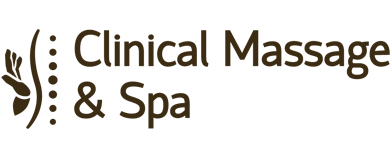Also, mistakes in liquidity order can lead to false financial conclusions. A classified order of assets on balance sheet balance sheet groups assets and liabilities as current and non-current. The order on a balance sheet helps to evaluate a company’s liquidity.
- The left side of the balance sheet is the business itself, including the buildings, inventory for sale, and cash from selling goods.
- A balance on the left side of an account in the general ledger.
- Its current liabilities declined by only a small amount from 2019 to 2020 ($105,718 to $105,392).
Then comes the non-current assets like plant and machinery, land and building, furniture, vehicles, etc.; they need a longer selling period and thus need time in liquidation. The balance sheet (also known as the statement of financial position) reports a corporation’s assets, liabilities, and stockholders’ equity as of the final moment of an accounting period. For example, a balance sheet dated December 31 summarizes the balances in the appropriate general ledger accounts after all transactions up to midnight of December 31 have been accounted for. Assets are listed in the balance sheet in order of their liquidity, where cash is listed at the top as it’s already liquid. The next on the list are marketable securities like stocks and bonds, which can be sold in the market in a few days; generally, the next day can be liquidated.
Understanding a Balance Sheet (With Examples and Video)
Financial statements, by themselves, may not tell the whole story. Many important details about a company cannot be described in money on the balance sheet. Notes are used to describe accounting policies, major business events, pending lawsuits, and other facets of operation.
It represents the value of brand recognition, loyal customers, etc. One of the most illiquid assets, as goodwill is only monetized when selling the entire business. Retained earnings are the profits turned back into the business, not given out as dividends. This reinvestment boosts investment value, important for long-term financial health. This account balance or this calculated amount will be matched with the sales amount on the income statement.
How Can Accounting Software Improve Balance Sheet Management?
Any credits not included in any other asset group are considered other assets. They could be payments for life insurance or cash advances to employees. Construction and expansion projects are also considered other assets. Unlike liabilities, equity is not a fixed amount with a fixed interest rate. The DSO is the average time the firm must wait after making a sale before receiving cash.
What are Business Assets?
Balance sheet account names and usage depend on the organization’s country and the type of organization. Government organizations do not generally follow standards established for individuals or businesses. Common errors include wrong classification of assets and liabilities.
Other intangible assets
They also play a significant role in determining a company’s market value and creditworthiness. Investors and analysts closely analyze the asset portion of the balance sheet to assess the company’s liquidity, solvency, and potential for future growth. Below liabilities on the balance sheet is equity, or the amount owed to the owners of the company. These are listed at the bottom of the balance sheet because the owners are paid back after all liabilities have been paid. Long-term liabilities are debts that are due in more than a year.
- We’ll do a quick, simple analysis of two balance sheets, so you can get a good idea of how to put financial ratios into play and measure your company’s performance.
- It’s about putting things in the right order to show a company’s true financial state.
- The balance sheet is indeed a very helpful financial statement, but it also poses challenges.
- Audit standards prohibit arbitrary reordering of assets on balance sheets.
- Using debt (such as loans and bonds) to acquire more assets than would be possible by using only owners’ funds.
If it does, it may be simple goods it uses to help deliver its service. For example, a cleaning company may keep an inventory of cleaning supplies. By presenting these items in a specific order, the balance sheet provides a clear and systematic view of a company’s financial position. Let’s now explore the order in which these items are typically presented on a balance sheet.
The ability to read and understand a balance sheet is a crucial skill for anyone involved in business, but it’s one that many people lack. The balance sheet is organized in the descending order of liquidity. Now that the balance sheet is complete, here are some simple ratios you can calculate using the information provided on the balance sheet. Your remaining assets and liabilities are generally combined into two or three other secondary captions, based on their materiality.
Next period (when it is earned) a journal entry will be made to debit the liability account and to credit a revenue account. Marketable securities include investments in common stock, preferred stock, corporate bonds, or government bonds that can be readily sold on a stock or bond exchange. These investments are reported as a current asset if the investor’s intention is to sell the securities within one year.
Order of Items in the Liabilities Section
The credit balance in this account comes from the entry wherein Bad Debts Expense is debited. The amount in this entry may be a percentage of sales or it might be based on an aging analysis of the accounts receivables (also referred to as a percentage of receivables). A balance sheet line that includes cash, checking accounts, and certain marketable securities that are very close to their maturity dates. The book value of an asset is the amount of cost in its asset account less the accumulated depreciation applicable to the asset.
